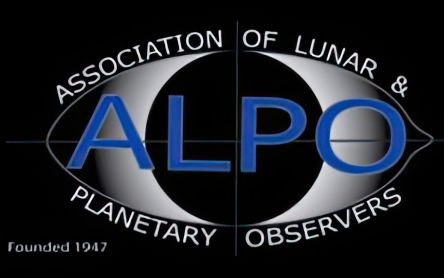Jupiter Section Blog
The 2024-2025 Jupiter apparition is well underway now, heading for western quadrature on September 12th when it will lie on the meridian at sunrise. Early morning observers have been submitting reports and excellent images, documenting the current belt and zone activity.
The Great Red Spot retains an orangish color and is down to about 13,100 km as measured in a recent fine image by ALPO member Gary Walker. With Earth’s equatorial diameter at 12,750 km, we have to wonder how much longer the most iconic storm in our solar system can claim to be larger than our home planet!
The South Equatorial Belt region trailing the GRS is fairly turbulent, with a large rift running SE-NW appearing the last couple of weeks. As noted by John Rogers and Shinji Mizumoto in their recent BAA report for the start of the apparition, there is an interesting South Equatorial Disturbance on the northern edge of the SEB, at about L1 = 280°. The North Equatorial Belt is back to being the widest, most dominant belt on the planet, making some of the long-enduring white spots (e.g., WS-E, WS-Z) more easily seen against the brown backdrop of the belt. There also have been some very intense “hot spots” along the southern border of the NEB, appearing as dark slate color.
Please continue to send in your images and sketches to jupiter@alpo-astronomy.org following the guidelines for submitting reports.
 Dr. John Rogers at the British Astronomical Association has announced publication of their 7th report for the 2021-2022 apparition of Jupiter. This report highlight activity in Jupiter’s Equatorial region.
Dr. John Rogers at the British Astronomical Association has announced publication of their 7th report for the 2021-2022 apparition of Jupiter. This report highlight activity in Jupiter’s Equatorial region.
- Methane-bright patches in the EZ that are almost stationary in their CM III (L3) longitude
- Bright plume outbreaks seen in the unusually quiet NEBs with two recent outbreaks happening December 19th and January 9th.
![]() We are a little over a month from Jupiter’s solar conjunction (Mar 5, 2022), so it is getting harder to observe the giant planet. But if you are fortunate enough to have a clear western horizon, your observations can be very important before we lose the planet entirely the Sun’s glare. We have seen before a situation where Jupiter emerges as a morning object a few weeks later sporting significant changes since it left the evening sky. Even though your observation may lack steady seeing and fine detail that is more easily captured at opposition, recording the state of large-scale features can prove useful.
We are a little over a month from Jupiter’s solar conjunction (Mar 5, 2022), so it is getting harder to observe the giant planet. But if you are fortunate enough to have a clear western horizon, your observations can be very important before we lose the planet entirely the Sun’s glare. We have seen before a situation where Jupiter emerges as a morning object a few weeks later sporting significant changes since it left the evening sky. Even though your observation may lack steady seeing and fine detail that is more easily captured at opposition, recording the state of large-scale features can prove useful.
 Don’t miss today's amazing image at APOD of one of the anti-cyclone white ovals captured by the Juno spacecraft during last month’s flyby of the giant planet. The photo resolves higher 50km clouds across the face of the oval as well as their shadow against the white oval cloud deck below.
Don’t miss today's amazing image at APOD of one of the anti-cyclone white ovals captured by the Juno spacecraft during last month’s flyby of the giant planet. The photo resolves higher 50km clouds across the face of the oval as well as their shadow against the white oval cloud deck below.

